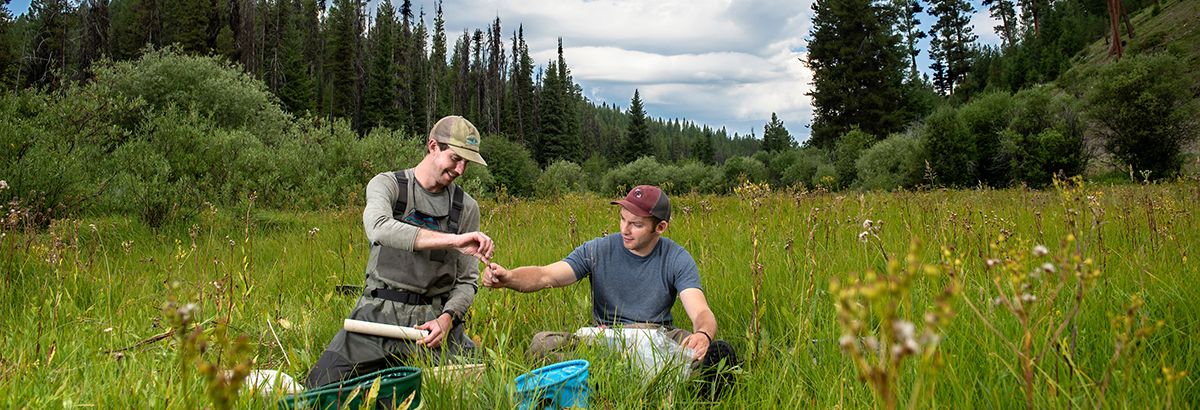Student Spotlight: Colter Feuerstein
In this episode, hear from Colter Feuerstein, a master’s student in the wildlife biology program at the W.A. Franke College of Forestry & Conservation. Colter grew up hunting and fishing in Montana and his time in the outdoors sparked his interest in wildlife biology. His current work focuses on westslope cutthroat trout preservation.
Episode Extras
Story Transcript
I developed this passion for fly fishing and that I would say is actually what really sparked my interest about trout. You know, just understanding why trout are there and what they're eating and why they're hanging out in certain habitat. I would say that understanding is really what started my whole interest in fisheries in general.
My name is Colter Feuerstein. I'm a master's student in the wildlife biology program.
I really love thinking about the data and what that tells us about what's going on in some of these systems. But, probably the funniest thing is actually going out in the field and collecting that data. That part of being a fisheries professional is really what excites me. I just, you know, I really liked being out in the field and getting to see what's going on out there firsthand.
I am currently working on a research project with Andrew Whiteley and Ryan Kovach on westslope cutthroat trout. Currently westslope cutthroat trout occupy a really small fraction of their native range and a lot of that's due to different anthropogenic effects such as habitat degradation, the introduction of nonnative species, and hybridization with rainbow trout. And so, a lot of these westslope cutthroat trout populations, particularly east of the Continental Divide are isolated in these headwater systems. When species become isolated and populations become small basically, they're on track to extinction. To prevent that, the state of Montana has proceeded to basically go into streams where westslope cutthroat trout were once prevalent, place a artificial stream barrier at the lower end of the system, and then take a poison called rotenone and clear out all of the non-native fish in that stream.
The idea is to take individuals from several of these populations, these isolated populations, and then reintroduce them into the stream that we just completely removed all non-native fish. With the hope of individuals from separate populations mixing together and increasing genetic variation in that system.
Basically, what I’m doing is several years later, I'm going back into the system and I'm collecting fin clips from progeny from the individuals that would have reproduced in those systems and taking that fin clip into the lab, extracting DNA on it. And then, the goal is to then look at every individual that was the result of reproduction in the system that was restored with multiple populations. Hopefully, the populations looked at have increased genetic variation and hopefully show characteristics of population viability for the long-term.
This idea of restoring species with multiple populations to increase genetic variation and evolutionary potential, it's being done across the globe and we don't really know much about it yet. And so hopefully, my research can look at these short-term outcomes and hopefully provide management recommendations as to whether or not certain conservation actions with restoring a population with multiple species are working initially. And, if so, if that should be applied to not only other west slope populations, but other species.
